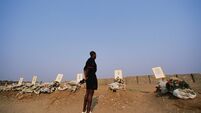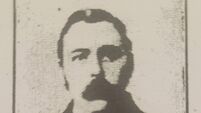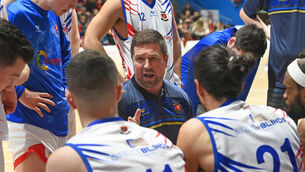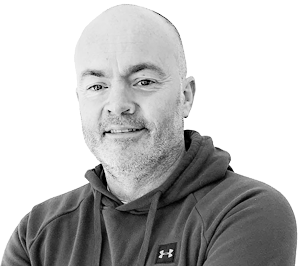Paul Rouse: What will the GAA look like in 20 years?

GAA IN THE FUTURE: The GAA is in the early stages of a structural change that will fundamentally redraw how Gaelic games are organised. Pic: Brendan Moran/Sportsfile
The GAA is in the early stages of a structural change that will fundamentally redraw how Gaelic games are organised.
The straightforward days of the unified county structure and of parish clubs are numbered.
This is something that is exceptionally perilous and will need careful management.
Local loyalties have been fundamental to the success of the GAA since its establishment. It is true that the games themselves are the greatest attraction of the GAA, but coming quickly behind is the idea of identification with place.
It can rightly be argued that the GAA should not abandon the very structures that have served it so well for some 140 years. That is true.
The problem is the logic of numbers.
This week on the GAA podcast, Pådraig Dalton, the Director General of the Central Statistics Office (and himself a former All-Ireland winning footballer) gave a brilliant exposition of where the population of Ireland now stands and where it is going.
The ramifications of this for the GAA are enormous.
It is something that has also been laid out in reports by the ESRI.
Taken together, if the projections prove to be broadly accurate, there is no conceivable way that the GAA’s competitive structures – and therefore its basic organisation – will remain unchanged.
What is expected is that the population of the Republic of Ireland, alone, will grow by one million people by 2040, bringing the creation of some 500,000 new households.
And this growth will, in turn, be almost certainly focused on Dublin and its satellite counties. So much so that the share of population in the ‘Dublin and Mid-East region’ is expected to increase from 1.91 million in 2016 to 2.35 million in 2040.
In reality, the trends of the next 20 years are really a continuation – or more properly an acceleration – of those which already exist.
The population of Dublin is already double that of the rest of Leinster, much more than double that of the whole of Connacht, and greater than the whole of Munster. It is lower than Ulster, but the historical divides of that province make that a meaningless statement.
Further, the age structure within counties is also important. The areas with the youngest average are in Dublin and its surrounding counties. And those with the oldest average age are out west and down south.
The fact that the birth rate is falling across the country also matters hugely – and disproportionately so in areas where the need is greatest.
This all obviously matters profoundly to the organisation of the GAA. It is manifesting itself in the difficulty that clubs in rural areas have in finding players to field teams and the difficulty that clubs in Dublin have in finding fields for their players.
It will not be sustainable to just carry on regardless. In fairness, the GAA has come to understand that. The work being done in Croke Park by Peter Horgan and his colleagues in the Data Hub project in Croke Park is fascinating. The data it provides is fascinating.
Similarly, the fact that since the Annual Congress earlier this year mandated each county to establish a Demographics Officer and a Demographics Committee is a serious step forward.
Without clear data on membership rates and much else from every region, the capacity to make sensible decisions will simply not exist.
What also matters is the number of immigrants who now live in Ireland. Census 2022 showed more than 700,000 immigrants living in the Republic of Ireland. Many different personal stories can be found under that broad title of “immigrant”. The GAA has made some strides here, but nowhere near enough.
In general, there is an urgent demand for a much broader structural conversation about what shape the GAA might take within the new Ireland that is growing around us.
It could hang around an essential question: ‘‘What will the GAA be like in 20 years time?’ And in answering this question, how do those people who argue for the county structure of the GAA to stay exactly as it is, propose to develop the Association? In what way will they accommodate both the advantages and the disadvantages of Dublin’s growing size in this future?
This is not something that can just be resolved by dividing Dublin into two or four. It will inevitably also consider in parallel the amalgamation of other counties.
The grave challenge here is one of identity. County loyalties are fundamental and tampering with them carried great risk. You could end up with the mess that is Welsh club rugby.
Back in 2017, a committee that had been established by Aogán Ó Fearghail
produced a report entitled “Towards 2034.” The report was essentially suppressed, but it contained the following observations about county-level play: “The GAA inter-county championships are based on county structures whose boundaries do not change, thus creating potential disparities between counties in terms of demographics, population distribution, fund-raising capacity and geographical factors. A gulf exists between competitive and non-competitive county teams with fewer county teams being able to realistically compete in order to win championship titles. The current imbalance between counties, both nationally and within provinces, may have a detrimental effect on inter-county championship competitions in terms of aspirations and the morale of officials, mentors and players.”
Dealing with those simple facts, the report called for a new approach to organising competitions at county level.
Strikingly, the report went even further at club level where it said “what is required is a ‘structural reincarnation’ that would result in competitive football and hurling in all counties by 2034.”
Since 2017, the need to consider ‘structural reincarnation’ has become much more acute. It is a challenge of the very highest order.
It is equally a challenge that cannot be wished away.














